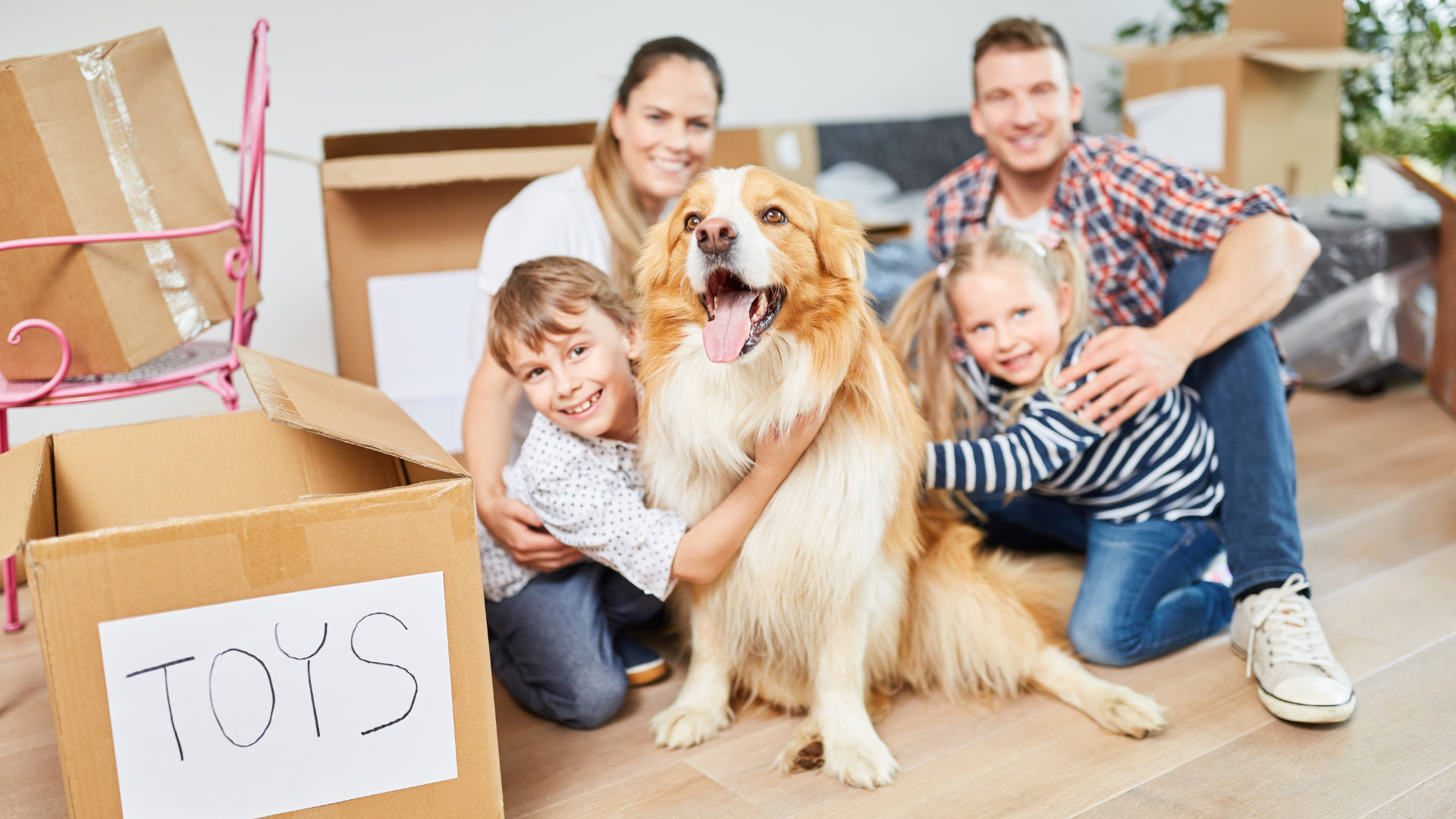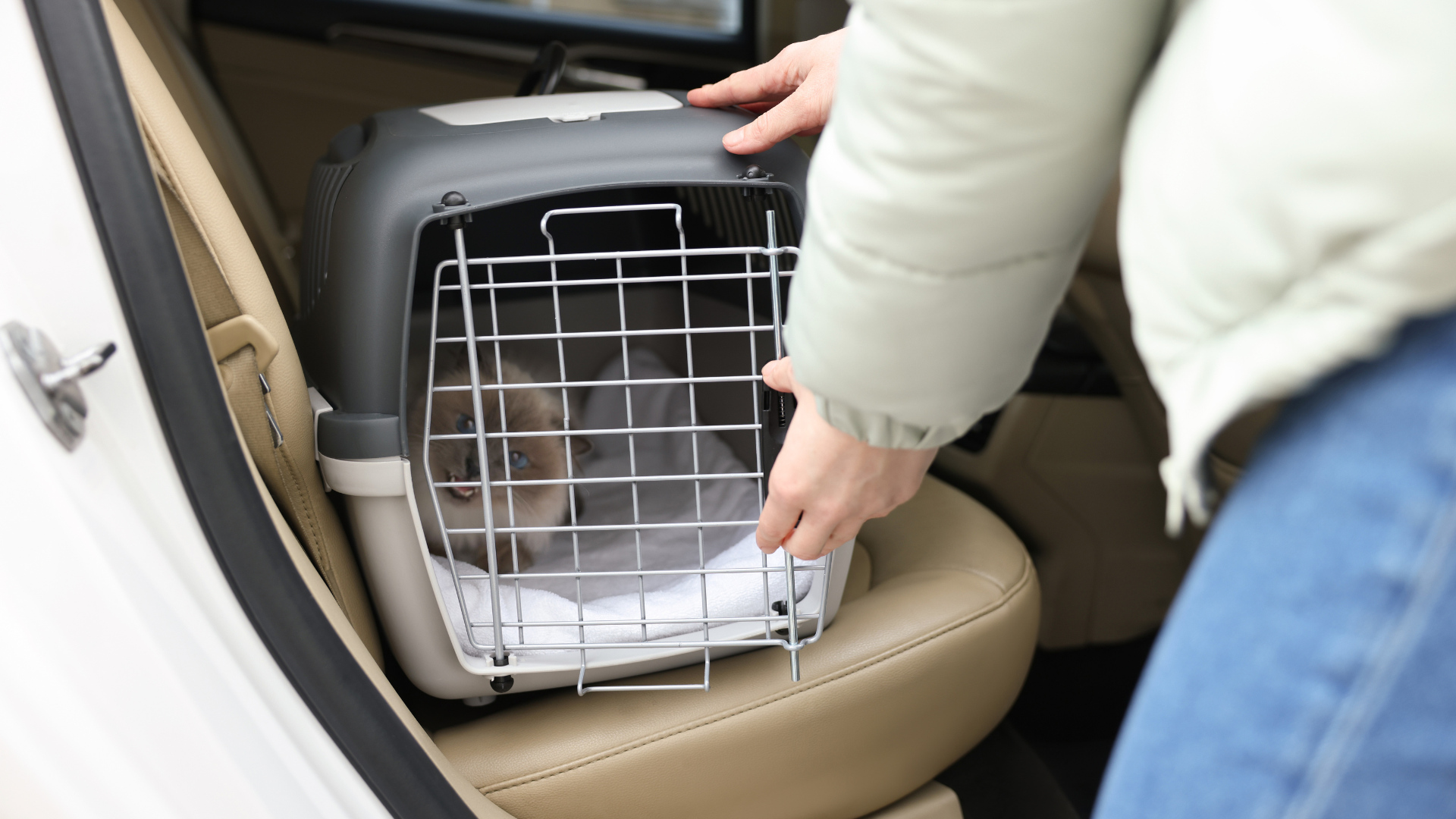
Moving with Pets: Long-Distance Moving Tips for Pet Owners

Moving can be a stressful experience for everyone involved, especially for our furry, feathered, and scaly friends. Ensuring a smooth transition for your pets requires careful planning and preparation. At MTS Moving and Storage Inc., we understand the unique challenges of moving with pets and are here to help. While we take care of your move, follow these comprehensive tips to make your long-distance move with your pets as stress-free as possible.
Planning Ahead
Research Pet-Friendly Accommodations
When planning a long-distance move with your beloved pet, ensuring their comfort and safety is paramount. One crucial aspect of this process is identifying pet-friendly accommodations along your route and at your final destination. By taking the time to research and book pet-friendly accommodations in advance, you can make the journey less stressful for both you and your furry companion.
There are several ways to find pet-friendly accommodations. One option is to use online resources such as BringFido and PetsWelcome. These websites provide extensive listings of pet-friendly hotels, motels, and vacation rentals across North America. You can filter your search by location, pet size, and other amenities to find the perfect place for your family.
Another option is to contact local animal shelters or rescue organizations. These organizations often have a list of pet-friendly hotels and motels in the area. They may also be able to provide you with other resources and support during your move.
When booking a pet-friendly accommodation, it is important to be upfront about the size and breed of your pet. Some accommodations have restrictions on the size or type of pets they allow. It is also important to ask about any additional fees or deposits that may be required for pets.
Once you have booked your accommodations, be sure to confirm the pet policy with the hotel or motel in advance of your arrival. This will help to avoid any surprises when you check in.
Schedule a Vet Visit
Before embarking on your move, schedule a visit to your veterinarian. Ensure your pet is up-to-date on vaccinations and overall health. Ask for a copy of your pet's medical records, and discuss any concerns about the move. Some pets might benefit from a mild sedative or anti-anxiety medication, which your vet can prescribe.
Before embarking on your move, scheduling a visit to your veterinarian is crucial for ensuring the health and well-being of your pet during this stressful transition. Here are some important steps to consider.
Update Pet ID Tags and Microchip Information
Ensure your pet's ID tags are current with your new address and phone number. If your pet is microchipped, update the information with the microchip registry . This step is crucial in case your pet gets lost during the move.
Gather Necessary Documents
Prepare all necessary documents for your pet, including health records, vaccination certificates, and travel permits if required. Having these documents handy can make crossing state or provincial borders smoother and stress-free.
Preparing Your Pet
Acclimate Your Pet to Their Carrier or Crate

Gradually introduce your pet to their carrier or crate well before the move. Make the space inviting with their favorite blanket or toy. Encourage your pet to spend time in the crate by offering treats and positive reinforcement.
Establish a Consistent Routine
Maintaining a regular routine can help reduce your pet's anxiety . Stick to consistent feeding, walking, and playtimes as much as possible leading up to the move.
Consider Calming Products
Pets of all kinds can benefit from the soothing properties of products designed to promote relaxation and reduce stress. One popular option is pheromone sprays, which emit synthetic versions of chemicals that animals naturally release to create a calming effect. These sprays can be particularly helpful for dogs and cats who are anxious or stressed during travel.
Another calming product is the anxiety wrap, a garment that applies gentle pressure to the
animal's body. The pressure from the wrap can have a similar effect to that of swaddling a baby, providing comfort and security. Anxiety wraps can be particularly beneficial for dogs and cats who are anxious about being left alone or who experience separation anxiety.
Both pheromone sprays and anxiety wraps are non-invasive and drug-free, making them a safe and effective way to help pets relax. They can be used in a variety of situations, including:
Travel: To help pets stay calm during car rides, flights, or other forms of transportation.
Vet visits: To alleviate stress and anxiety associated with veterinary visits.
Home alone: To provide comfort and security to pets who are left alone for extended periods of time.
Storms and fireworks: To help pets stay calm during loud noises and other stressful events.
If you're looking for a way to help your pet relax, pheromone sprays and anxiety wraps are both worth considering.
Practice Short Car Trips

If your pet isn't used to car travel, take them on short trips to get them acclimated. Gradually increase the duration of these trips to build their comfort level.Introducing your pet to car travel requires patience and positive reinforcement to ensure a comfortable and safe experience. Here are some steps to help your pet adjust:
Start with Short Trips:
To accustom your pet to car travel, take them on short, gradual trips when they are relaxed and not hungry, using a secure carrier or harness.
Create a Positive Association:
Engage in positive activities with pets before trips and associate car travel with pleasant experience
Keep the Environment Comfortable:
Car should be well-ventilated and comfortable. Avoid extreme temperatures for your pet's comfort.
Take Frequent Breaks:
Plan regular breaks on long trips for pets to stretch, go to the bathroom, and drink water. Choose pet-friendly rest stops with space for pets to move around.
Gradually Increase the Distance:
Increase car ride duration and distance gradually. Start with short trips and progress to longer journeys.
Provide Comfort Items:
Bring familiar items for comfort. Prepare your furry friend for a comfortable and safe trip with an essential travel kit. It can include a cozy bed, toys to keep them entertained.
Be Patient and Consistent:
Understand that some pets may take longer to adjust to car travel.
Be patient and consistent with your approach, and avoid forcing your pet into the car if they are showing signs of distress.
Packing for Your Pet
Create a Packing List for Pet Essentials
Prepare a comprehensive packing list for your pet's essentials. This should include food, water, bowls, a leash, a litter box for cats, and favorite toys. Packing familiar items can provide comfort and a sense of security for your pet.
Pack a Pet Travel Kit
Put together a travel kit with items you'll need during the journey, such as medications, a favorite blanket, and waste bags. Having everything organized and easily accessible will make the trip smoother for both you and your pet.
Ensure Enough Food and Water
Pack enough food and water for the trip, plus a few days’ supply for after arrival. Sudden changes in diet can upset your pet's stomach, so keeping their usual food on hand is important.
During the Move
Keeping Pets Calm and Comfortable
Maintain a calm demeanor, as pets can pick up on your stress. Speak to them in soothing tones and offer reassurance throughout the journey.
Handling Rest Stops and Breaks
During rest stops, keep dogs on a leash and ensure cats are secure in their carriers. Provide water and a chance for your pet to relieve themselves. Avoid leaving pets unattended in the car, especially in extreme temperatures.
Preventing Escape or Loss
Double-check that carriers are securely closed and that pets are on leashes before opening car doors. Make sure ID tags are visible and microchip information is up-to-date to help reunite you with your pet if they get lost.
Plan You Move with MTS Moving and Storage
Moving with pets requires careful planning and patience, but with the right steps, it can be a smooth and successful experience. At MTS Moving and Storage Inc., we are dedicated to making your move as stress-free as possible. While we handle the logistics of your cross-country move, you can focus on ensuring your pets' comfort and safety. With preparation and consistency, your pets will soon feel at home in their new environment. Let us help you make your next move a seamless journey for both you and your furry friends.
For professional moving services that prioritize your needs, contact MTS Moving and Storage Inc. today.